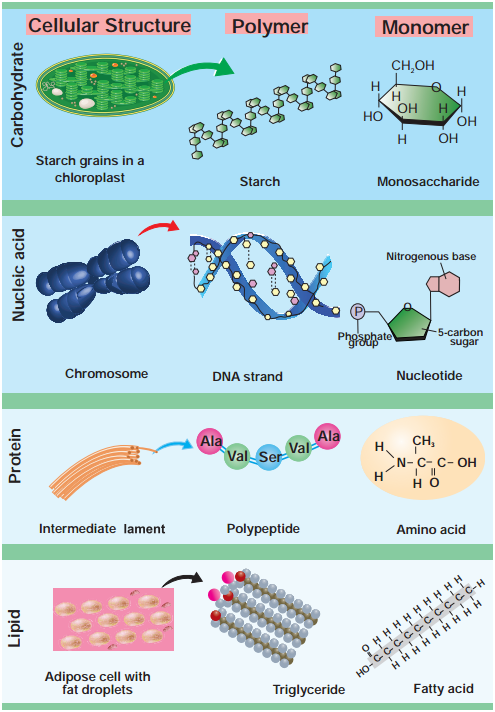Learninsta presents the core concepts of Biology with high-quality research papers and topical review articles.
Lipids and its Various Types
The term lipid is derived from greek word lipos, meaning fat. These substances are not soluble in polar solvent such as water but soluble in non-polar solvents such as benzene, ether, chloroform. This is because they contain long hydrocarbon chains that are non-polar and thus are hydrophobic. The main groups of compounds classified as lipids are triglycerides, phospholipids, steroids and waxes.
Triglycerides
Triglycerides are composed of single molecule of glycerol bound to 3 fatty acids. These include fats and oils. Fatty acids are long chain hydrocarbons with a carboxyl group at one end which binds to one of the hydroxyl groups of glycerol, thus forming an ester bond. Fatty acids are structural unit of lipids and are carboxylic acid of long chain hydrocarbons. The hydrocarbon can vary in length from 4 – 24 carbons and the fat may be saturated or unsaturated.
In saturated fatty acids the hydrocarbon chain is single bonded (Eg. palmitic acid, stearic acid) and in unsaturated fatty acids (Eg. oleic acid, linoleic acid) the hydrocarbon chain is double bonded (one/two/three). In general solid fats are saturated and oils are unsaturated, in which most are globules.
Lipids are molecules that contain hydrocarbons and make up the building blocks of the structure and function of living cells. Examples of lipids include fats, oils, waxes, certain vitamins (such as A, D, E and K), hormones and most of the cell membrane that is not made up of protein.
The Four Main Groups of Lipids Include:
- Fatty acids (saturated and unsaturated)
- Glycerides (glycerol-containing lipids)
- Nonglyceride lipids (sphingolipids, steroids, waxes)
- Complex lipids (lipoproteins, glycolipids)
A lipid is any of various organic compounds that are insoluble in water. They include fats, waxes, oils, hormones, and certain components of membranes and function as energy-storage molecules and chemical messengers.
Fats and lipids are an essential component of the homeostatic function of the human body. Lipids contribute to some of the body’s most vital processes. Lipids are fatty, waxy, or oily compounds that are soluble in organic solvents and insoluble in polar solvents such as water.
Examples of lipids include fats, oils, waxes, certain vitamins (such as A, D, E and K), hormones and most of the cell membrane that is not made up of protein. Lipids are not soluble in water as they are non-polar, but are thus soluble in non-polar solvents such as chloroform.
The main difference between lipids and fats is that lipids are a broad group of biomolecules whereas fats are a type of lipids. Fat is stored in the adipose tissue and under the skin of animals. It is mainly used as an energy-storage molecule in the body. Most steroids in the body serve as hormones.
Lipids are an important part of the body, along with proteins, sugars, and minerals. They can be found in many parts of a human: cell membranes, cholesterol, blood cells, and in the brain, to name a few ways the body uses them.
Within the body, lipids function as an energy reserve, regulate hormones, transmit nerve impulses, cushion vital organs, and transport fat-soluble nutrients. Fat in food serves as an energy source with high caloric density, adds texture and taste, and contributes to satiety.
Most people have high levels of fat in their blood because they eat too much high-fat food. Some people have high fat levels because they have an inherited disorder. High lipid levels may also be caused by medical conditions such as diabetes, hypothyroidism, alcoholism, kidney disease, liver disease and stress.
Lipids play diverse roles in the normal functioning of the body: they serve as the structural building material of all membranes of cells and organelles. they provide energy for living organisms – providing more than twice the energy content compared with carbohydrates and proteins on a weight basis.
The body uses three main nutrients to function – carbohydrate, protein, and fat. These nutrients are digested into simpler compounds. Carbohydrates are used for energy (glucose). Fats are used for energy after they are broken into fatty acids.
